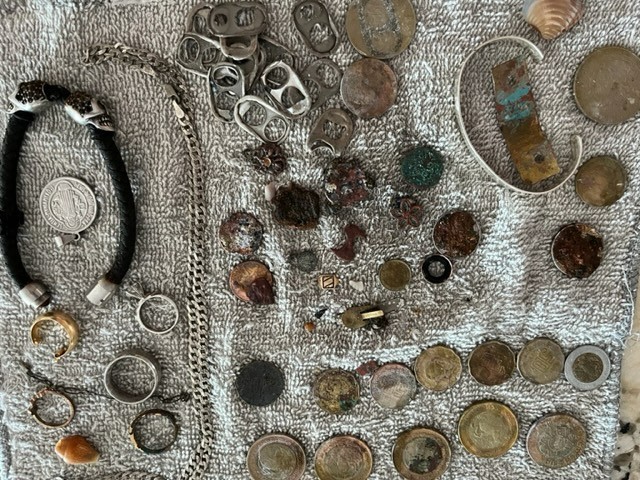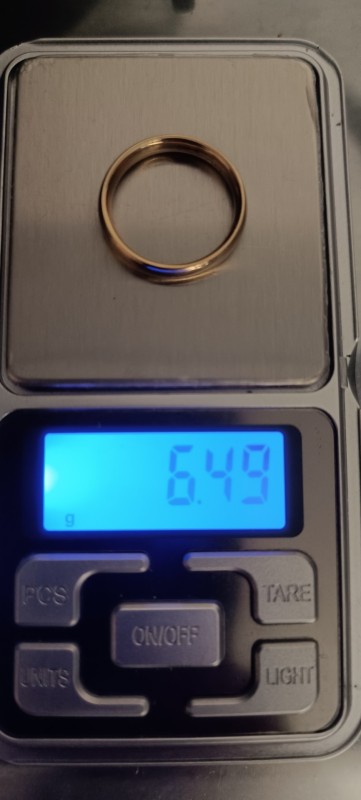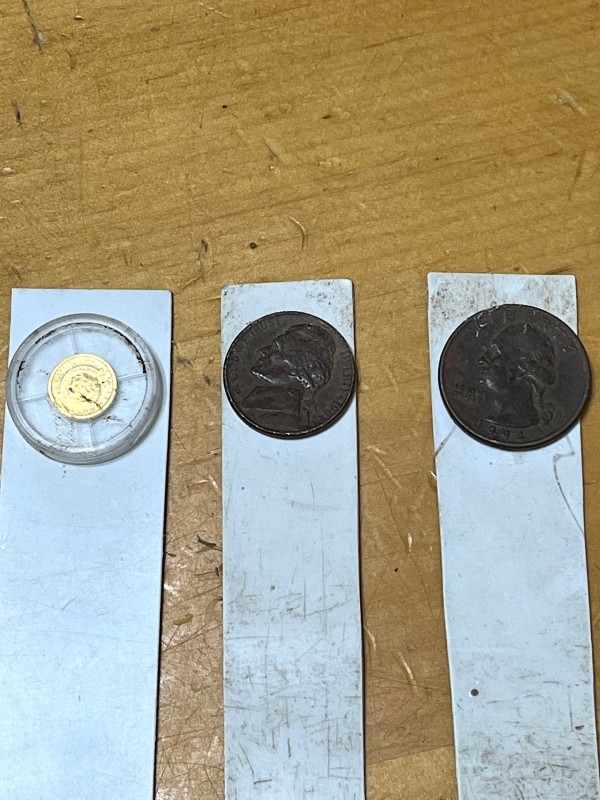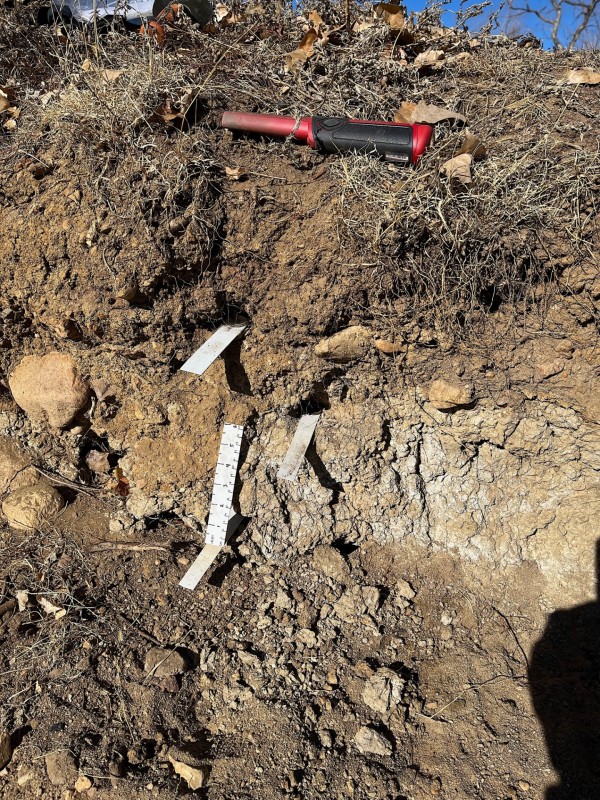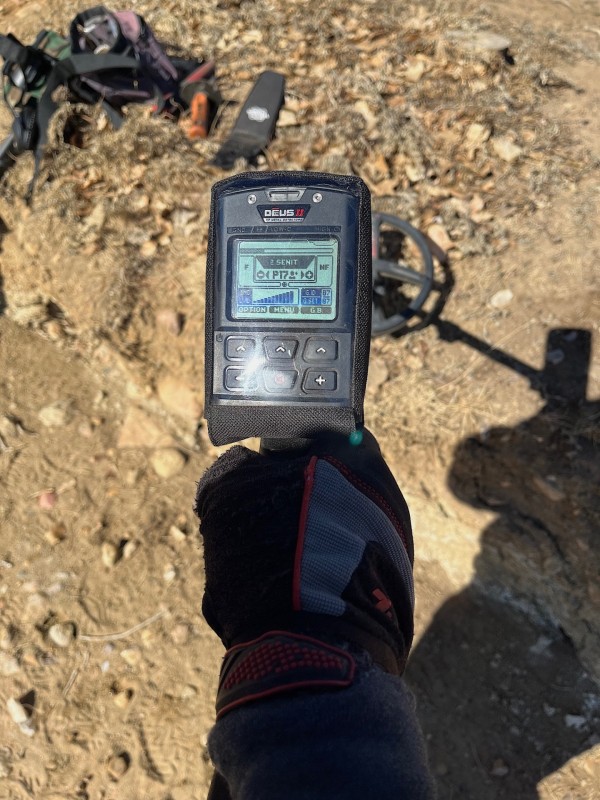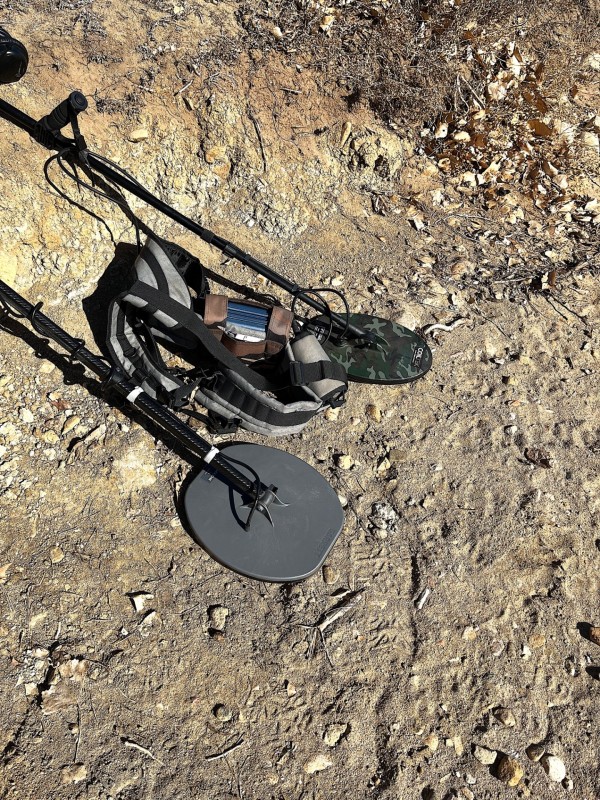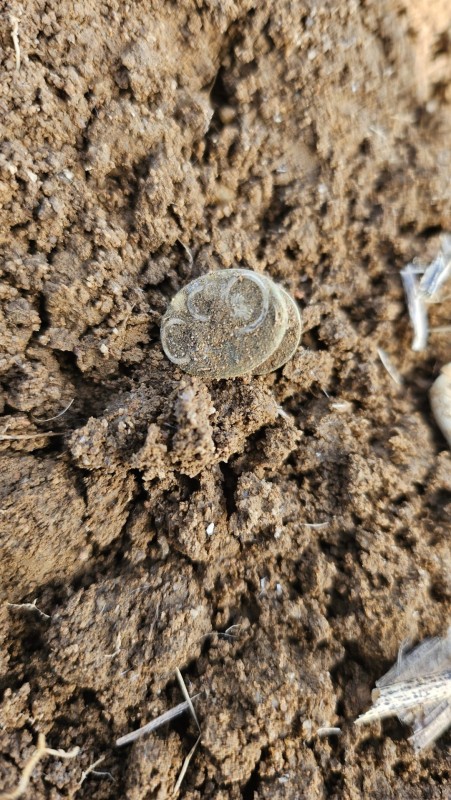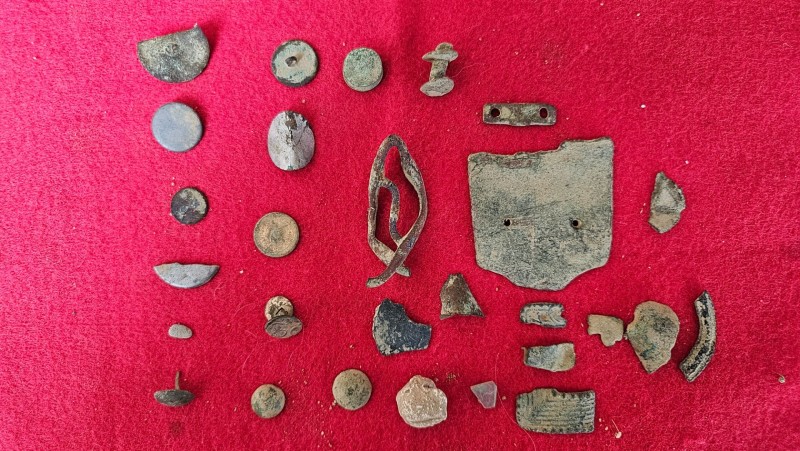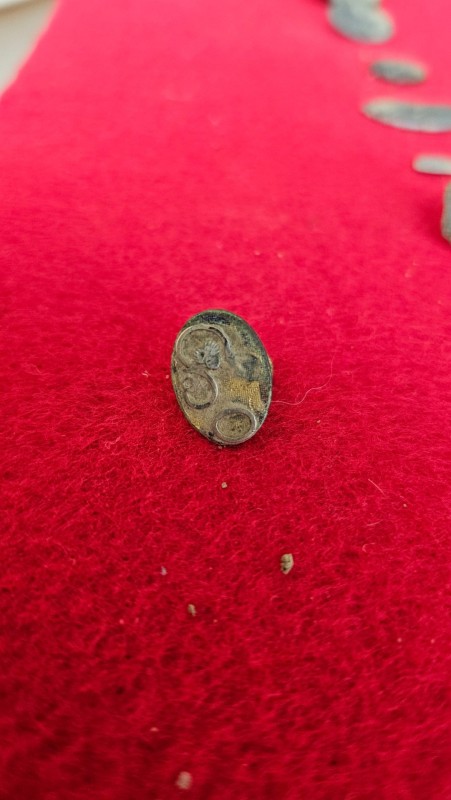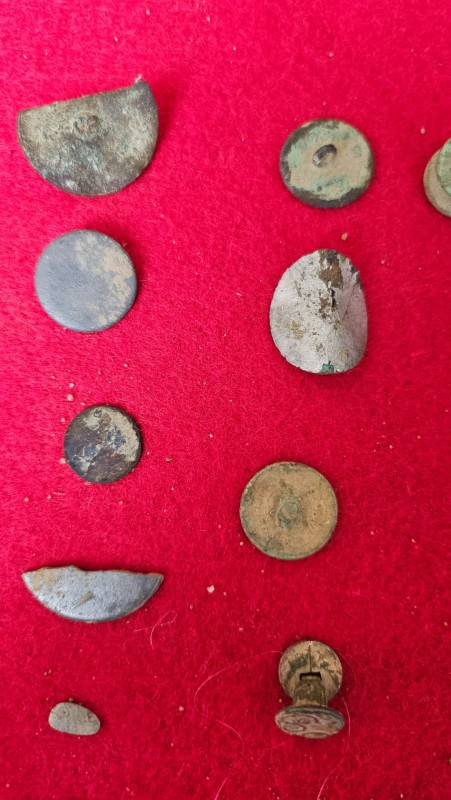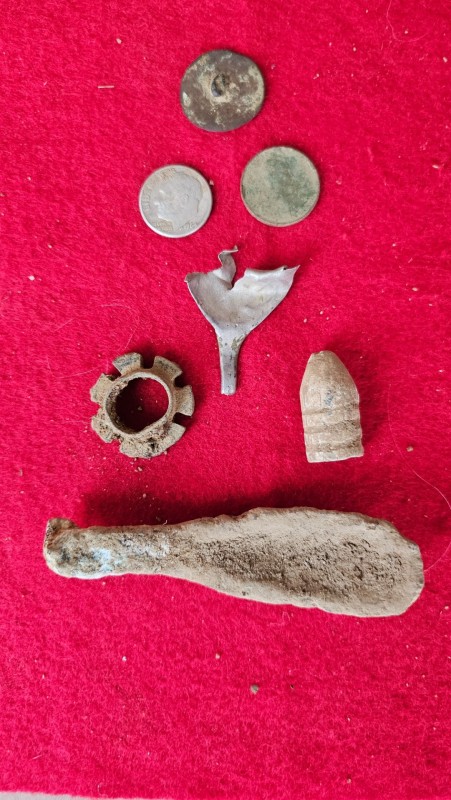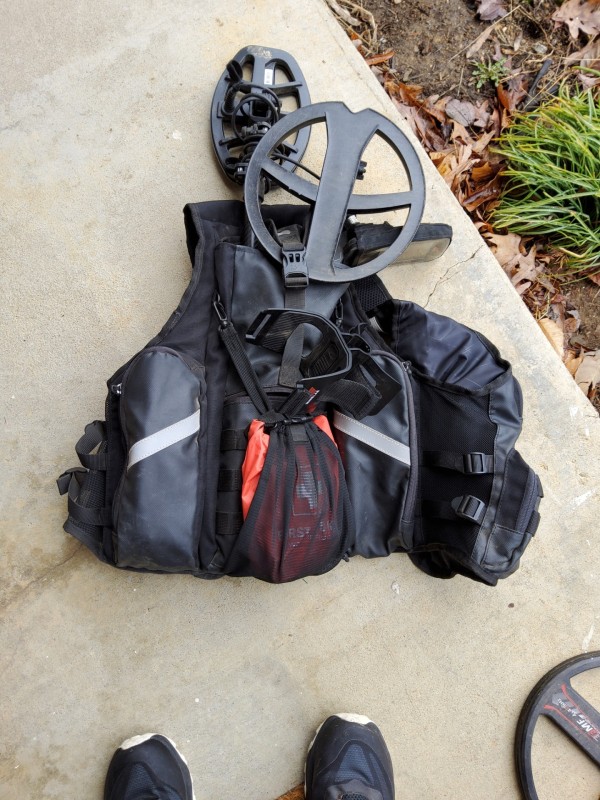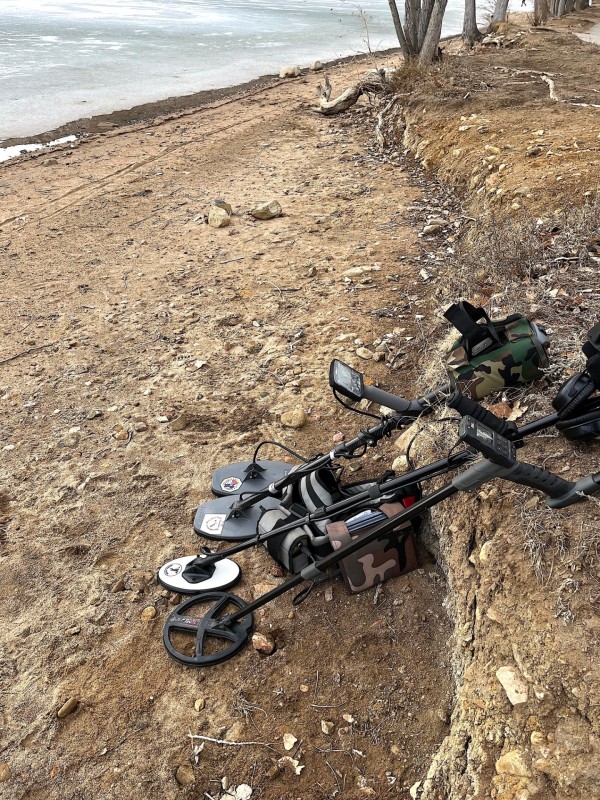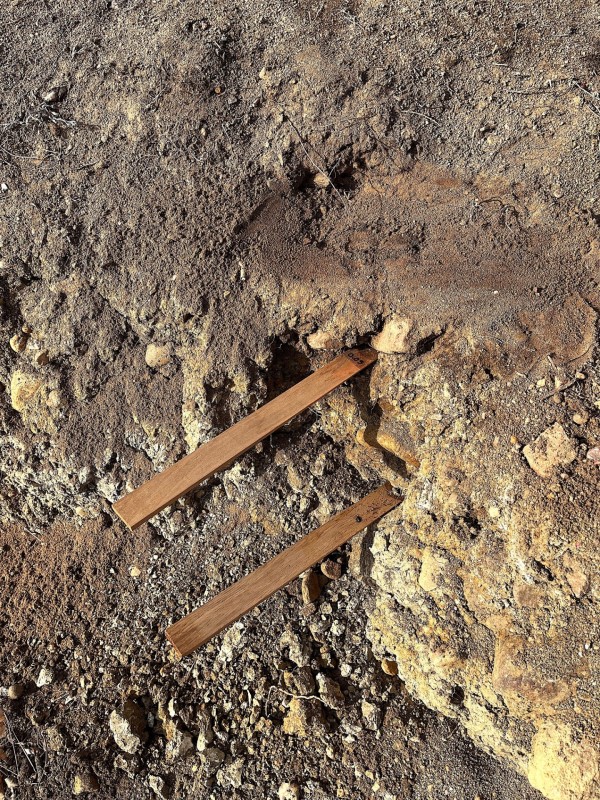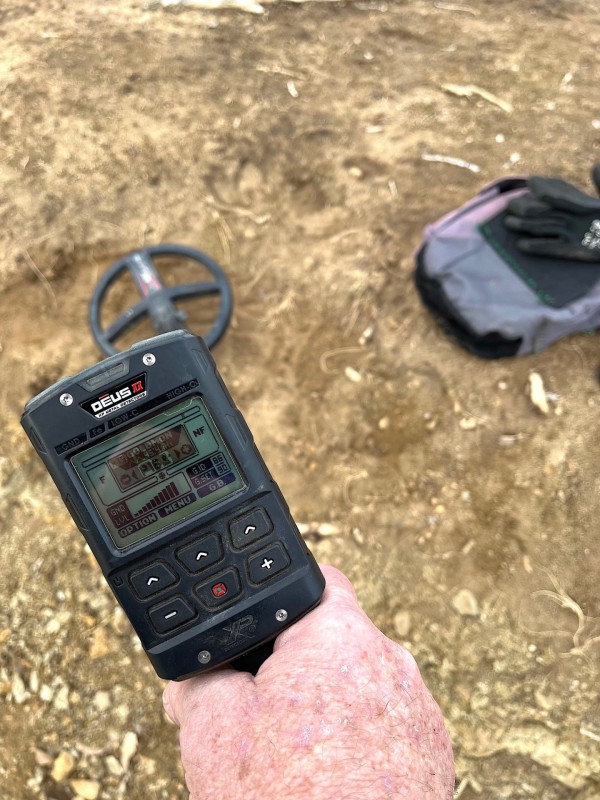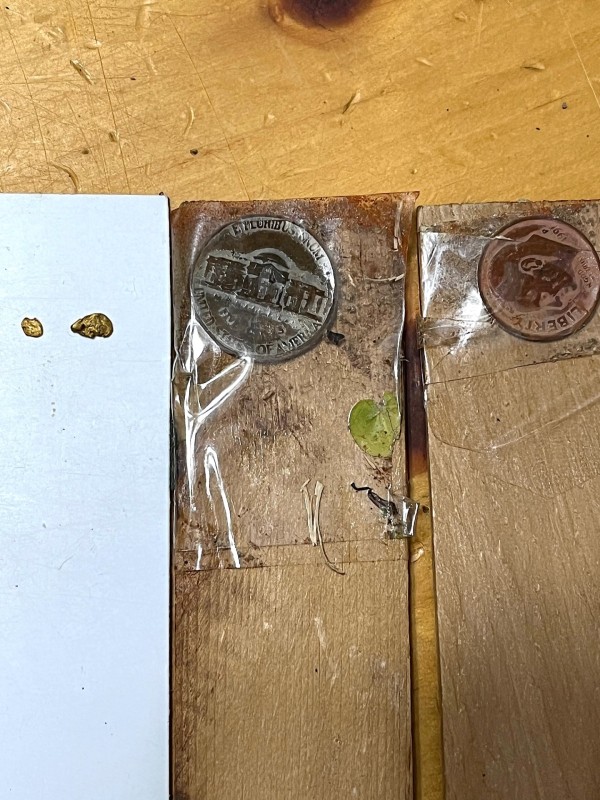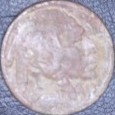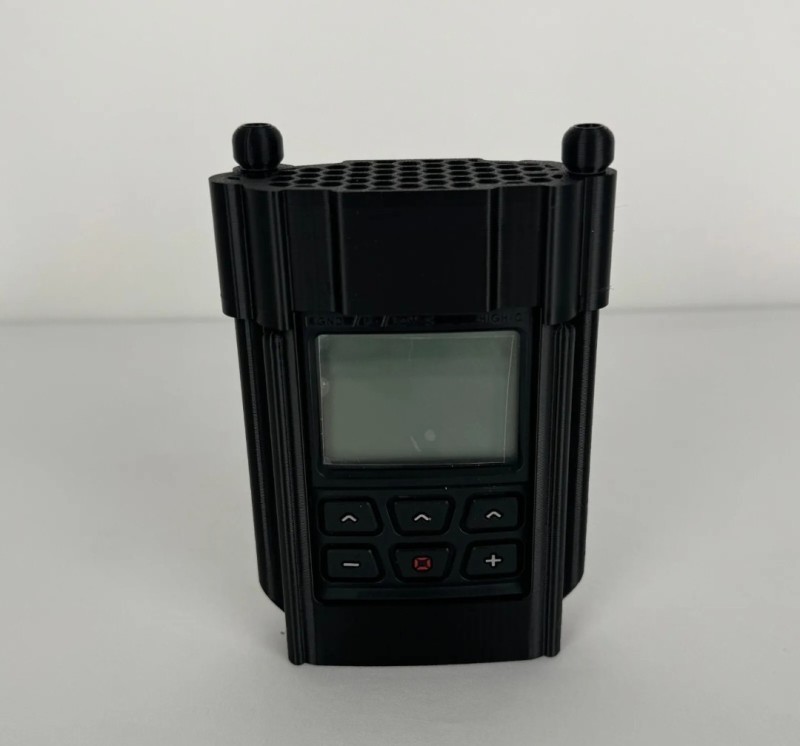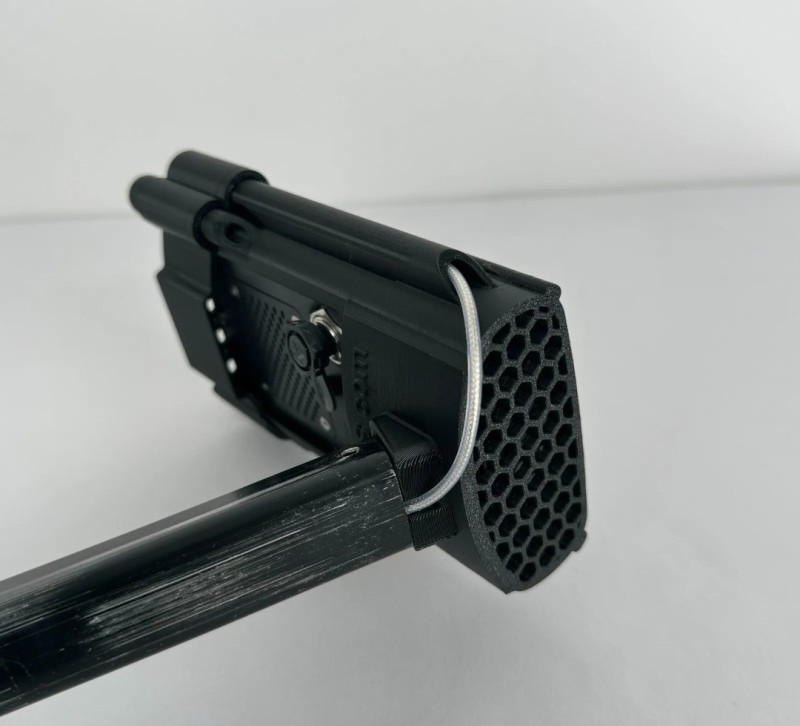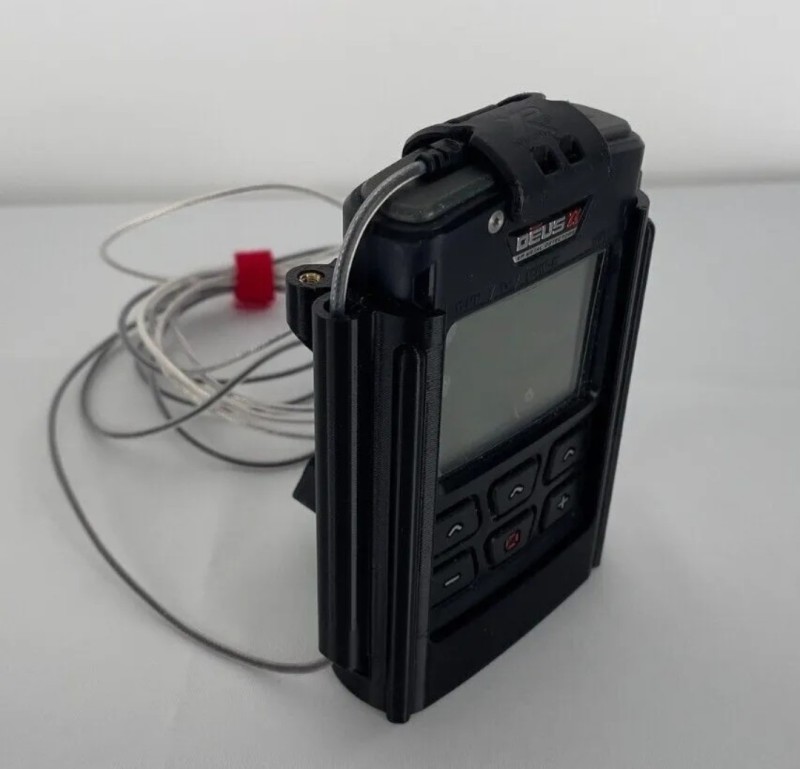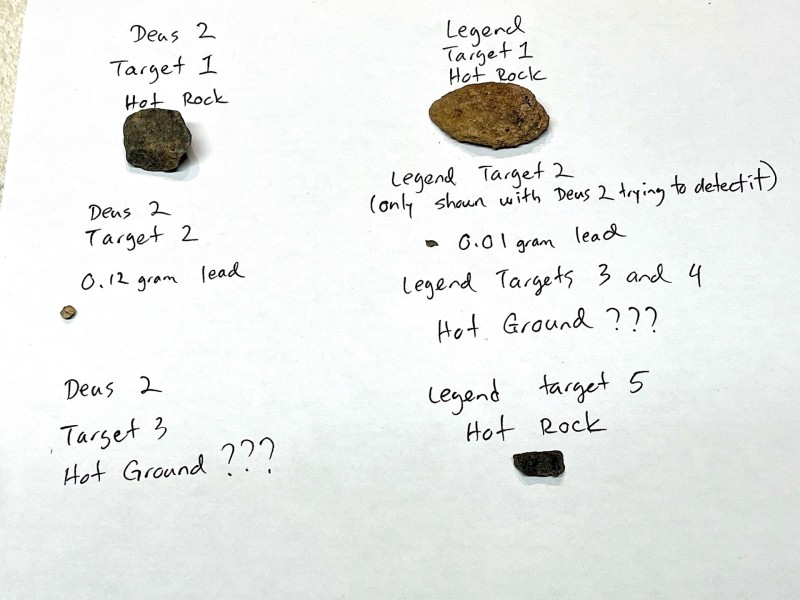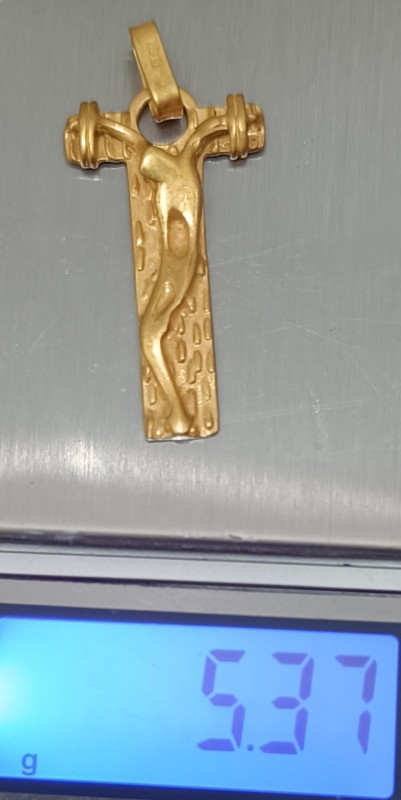Search the Community
Showing results for tags 'xp deus 2'.
-
This is a semi in the ground test on a 0.1 gram gold nugget for anyone that would like to use one of the "do it all" simultaneous multi frequency VLFs for gold prospecting. For the "fairness" police, please don't complain about coil sizes. The smallest coil available for Deus 2 is the 9" coil. So blame XP not me. XP include a simultaneous multi frequency "Gold Prospecting" mode on Deus 2. I would like to use it. This video shows why currently I will not use it. Video starts with checking the test area ground for targets, ground balancing, showing the target and how it is placed in the ground and then the test begins. Deus 2 uses customized FMF Goldfield and customized single frequency Mono program both with sensitivity on 95. I wanted to use the Hi Square audio, Pitch tones and the absolute zero discrimination for both programs along with a slight threshold. That is why I did not use stock default programs. All settings are as identical as I can make them except for the new Audio Filter feature which is on setting 1 for FMF Goldfield custom program 16 and it is on 0 for 40 kHz Mono custom program 15 which was an oversight failure on my part. I did retry it after making the video with FMF Goldfield custom program having Audio filter on 0. It made zero difference. Legend starts at 3:25 of the video. It uses its 6" coil with sensitivity on 23 in Gold Multi and Gold 40 kHz. Equinox 900 starts at 6:00 of the video. It uses its 6" coil with sensitivity on 23 in Gold 1 Multi and Gold 1 40 kHz. All settings are clearly shown in the video for each program being used on each detector. The ruler sticking up out of the ground behind the target is 5 cm high and the target itself is 2" deep or roughly another 5 cm deep. Legend and Equinox in the Gold Multi modes can hit this target 5 cm above the ground. They can hit it at 4 cm above the ground using single frequency 40 kHz. Deus 2 using its 40 kHz Mono program also hit this target at 4 cm above the ground. We could debate about whether Deus 2 in FMF Goldfield is actually hitting the target even with the coil bumping into the target holder. Deus 2's mineralization meter is between half and 3/4th full so moderate to high mineralization which all three detectors struggle with when ground balancing in selectable single frequency 40 kHz. This video is being sent to XP. I sent XP an email and they replied within 24 hours which I really appreciate. Thank You XP!!!!! This is the email exchange between me and XP: HI Jeff Thanks for this feedback. Yes you have right the 40khz of the DEUS II would perform very well if available also in the gold Field Program, as the mono frequencies from the DEUS II are more powerfull than DEUS 1. We will think to make this availabe in the next version. Regards XP TEAM Message : XP, thank you very much for the Deus ll software update version 1.0 and for making it Mac compatible. I am a gold prospector. I use VLF and Pulse Induction detectors. I use a VLF detector for detecting the smallest bits of gold in the 0.5 gram and much smaller size range. I have used Deus 1 and ORX for this. They work very well in their Gold modes. I would like to use Deus 2 for gold prospecting. However, even after updating to version 1.0, Deus 2 FMF Goldfield sensitivity to very small gold nuggets 0.5 gram and smaller down to 0.01 grams is extremely poor. Deus 2 Mono or Fast 40 outperform Deus 2 FMF Goldfield on these types of targets by up to 5cm. One of my test nuggets is 0.08 grams. It can only be detected using FMF Goldfield at 3cm. Fast 40 and Deus 2 Mono will easily detect this same small nugget at 8cm. Being able to use FMF technology in highly mineralized gold prospecting areas would be really beneficial. Unfortunately, for whatever reason, FMF Goldfield's insensitivity on small to very small bits of easily detectable gold using Deus 2 Mono is still very disappointing.
- 9 replies
-
- 16
-

-

-
- xp deus 2
- minelab equinox
-
(and 1 more)
Tagged with:
-
The manticore "deal" currently running that includes 3 coils got my juices flowing once again. I have owned a EQ800 and 900 and Deus I in the past, I was not able to dedicate time to adequately learning the machines and ended up selling them all and migrating back to my MXT PRO for a turn on and go machine. Realizing now that any of the others could fill that role as well if I kept my fingers from gerfloppen around has gotten me thinking "time to upgrade". One noted idea that began to move me is that there was a time when Steve had the MXT as almost legnedary, but sometime recently kinda downgraded it as past its prime due to its single frequency. So I am looking for a multi frequency machine for the broad range of detecting types of which gold and relics are more limited endeavors but nugget shooting is in my future as a western US guy with retirement coming into view. I have looked high and low and can't really find any definitive discussions on who has the best ground tracking/elimination system which is on top of my list as well as the multi-freq. capability. Being west coast based, my general range includes mostly difficult soils, and I am not close enough to salt water beaches where people are all that willing to jump in or lay in the sun (when it infrequenctly does shine)although I do get some chances to hunt inland lakefront beaches from time to time. I prefer old parks and campgrounds and am planning a backcountry trip into the Bitteroots and Rockies to do a bit of prospecting in the not so distant future. I have diligently read comments from Steve, Jeff, phrunt and others so have a pretty broad understanding of what's out there, but most of the comments about comparisons etc. are a year or so old and am hoping to hear some thoughts on how things have been progressing with better coil selections, user experience, factory updates etc. I realize that gains to "depth" transferring from my old MXT to more recent detectors will come from great ground handling, faster recovery speeds and other refined tools so am not looking for a holy grail, just an entry point that will keep me going for the next 5 years or until sombody really moves the bar up. I am intrigued by the manticore 2d display as it seems reminiscent of my etrac and V3i visual feedback. I just can't seem to settle in on a choice, but the current ML Manticore deal seems pretty attractivfe... anybody want to shine some light??
- 19 replies
-
- minelab equinox
- manticore
-
(and 1 more)
Tagged with:
-
Although there used to be quite stringent rules for dealers on selling instruments and accessories outside the allocation area, lately it is possible to find several detectors of any brand on Amazon or eBay and buy them from another country. Having just sold a coil of my old Deus2, the new owner does not know what to do in case of service. Since the coil came from France, is it possible to get service from a dealer in another country? Should one send it to the dealer who first made the sale to initiate the service procedure? Thank you to anyone with information on this matter....
-
I tested 50 gold pieces, rings, pendants and anything gold, with the Equinox 800 and the Deus 2. The Dues 2 numbers were jumpy just by two or three, but it did sound good on most. The Equinox hit strong on everything with a solid number. On odd shaped and small objects of gold even a small gold chain the Equinox sounded much better. Both were in Park. Why?????
-
have you noticed ,nobodys mentioned em what progs have FMF and what are they ?and how do you choose which ones on a new self proggy? and what can they be ? and how deep can they be ..does full metal no discrim contain which 1s ? curious as i have no d2 yet and yet to be convinced
-
At times of the year, I really struggle with Black Sand in my location. This year was no different. I have done more comprehensive testing on updated machines. On many days I hunted half days on each machine so I could tell differences in same conditions. [thanks to my wife delivering machines] I want to outline a few general recommendations: 1. Slow Down, 2. Use Tracking GB, 3. Sensitivity set so you hear just slight Black Sand interference. 4. Look at your fringe targets with a couple more points of sensitivity. 5. Don't trust your machine is working well with moving water, wave wash. [do checks]. D2> So much to unpack here. First, the D2 is a tale of two machines. One [the devil] in Black Sand, the other, [the angel] in non-Black Sand. The positives> Light to hunt. Fair separation of iron from non-ferrous. Good separation of targets. Good at noise canceling. The negatives. Noisy. The Menu. Clipped target sounds at depth for non-ferrous. Moving water takes D2 out at any depth. Must look at many targets from Mutiple directions[time consuming] . Equinox 800> Not much to unpack. The Positives> Better Black Sand handling. The Menu. Good separation but under the D2. GOOD sounding targets [not clipped]. MUCH better target sounds at depth. Better and faster deciding iron from non-ferrous. Works with moving water unless target is deep. The Negatives> Lousy noise cancel. Heavier to hunt with. Waterproof issues. Sometimes loss of targets in the hole. Hunting summary> For about a week I hunted the D2 exclusively, I really wanted to get a gold chain hunting in Beach Sensitive [which I think is better than Equinox Beach 2.] [no gold chain] Then had the Equinox out a few times. Then updated the D2, and started hunting both machines daily. Every day I started with the D2 and switched to the Equinox. There was not ONE DAY that I wanted the D2 to remain with me. I find the D2 ear exhausting, both in how it handles Black Sand and in deciphering targets. The clipped and bite-y sounding nonferrous targets at depth are a real PIA. The range of pull-tab numbers are ridiculous. Tough to make headway with the interrogation needed on some targets. Not much difference in hunting with a max frequency of 24 or 40. Maybe 1-point sensitivity lower with 40. ANY moving water would completely wipeout the detection field of the D2 in both Beach and Beach sensitive. At best I could only pull a 91-sensitivity setting, but most detecting was done at 87-89. The Equinox> So MUCH better on handling Black Sand. Most hunting was done at 21 even with water contact. Detection field works in moving water but not on targets of depth. With the Horseshoe mode on telling the difference between Ferrous and nonferrous is MUCH easier and quicker. The unmistakable double ring of iron is clear and smooth. Target investigation time is cut down. I don't think there is a winner in the small bit category. Both machines seem to find small bits well. While I did not do any head-to-head burying of targets. Both machines seem to have their moments of man that was shallower than I thought and also the holy crap, that was deep moment. NOT trying to make this a one is better than another, your conditions may provide different results. If you have compared other machines to the ones I have PLEASE post! I will answer all questions of settings or conditions or ??? In the picture: ALL of the larger jewelry was found with the Equinox yesterday. Only a few small bits with the D2. This has been a bit of a trend. I give the nod to the Equinox's ability to tell ferrous from non-ferrous at depth. Most of this jewelry was deep with negative numbers but had clean one beep hits. My D2 will be in the closet until the black sand subsides.
-
This is for people who have used both. Not really interested in opinionating from those who are just speculating. I have been hanging tough with my Equinox 800 package, in large part due to the coil selection. Both the D2 and Manticore have left me wanting in that department so far. XP holding out on the 5x10 coil, and Minelab holding out on, well, just about everything up to now. But at least the M8 and M15 coils are reaching user hands, and I am hopeful we might see a Coiltek 5x10 someday. But to keep it on the straight and narrow lets consider two coils only. The Deus 2 with 9" round as it's smallest option at this time, versus Manticore with 5x8 M8 coil. In general if coil sizes were identical I think most people would give the D2 the edge on picking non-ferrous out of a nail bed. But coils rule in the end, and I suspect the smaller M8 coil might tip the equation in favor of the Manticore for hunting dense trash. I'm also a small gold nugget guy as most people know. While some have knocked the Deus 2 for small gold capability my buddy Condor has one and does quite well on small gold with it in my opinion. As in I have been impressed. Yet another person (abenson) has the M8 on the Manticore and has killed it on some impressively tiny gold, but did note coil knock as an issue, something not seen on the Deus 2. That is however very dependent on sensitivity and even more so ground balance settings, so jury out on that for sure. Long story short I am strongly considering on replacing my Equinox 800 by next year with either the Deus 2 or Manticore. I tend to lean into small coils with VLF so the 9" or M8 are a real focal point for me. Frankly, if XP released the 5x10 for the Deus 2 it would probably be game over for me, but they really don't want me having that detector so are refusing so far to release that coil for the Deus 2. Yeah, I have heard the reasons why not - falling on deaf ears here. You out there XP? Give us the 5x10 for the Deus 2 and we can end this debate now. Until then however the Manticore M8 combo rates high with me, not least because I am simply more used to the Minelab way of doing things with menus. XP is a more radical shift for me. And in the long run I do think the Manticore will have the better coil selection, as we can at least hope for limited aftermarket coil support. Something we will never see with XP. Blah blah blah I do go on. So what do you people who have used both think about the D2 9" combo vs Manticore M8 setup?
-
I want to address this discussion without attacking any person at all, but take this opportunity to technically discuss my experience of research adopting the Deus2 on the seabed. That being said, I have had a rare case of misleading target ID happen to me, and although I read everywhere among you detailed tests of gold pieces falling in the high end up to about 85 points, I want to explain my drawback. The ring you observe in the photo, is an ordinary wedding ring that probably because of its thickness, responds with a solid 80. Forgive my assertion, but this is damning, considering the multitude of coins and leads that fall within those figures. While this is a rare case, which I might estimate on a scale of 1 to 10 as a 2, it means a significant loss of effectiveness in selecting signals worthy of excavation. I am ready to receive any comment from those who dig any repeatable signal, but I want to remember my own difficulty during a dive session, when with zero visibility, freezing water and time running down for the air termination, this is a detriment. My point is a subtle one that the so-called Pros will probably understand better, and by that I am not calling anyone stupid. (Life has brought me to the condition of having to live more and more frequently with only the gold production I derive). That said, the incredibly large scale where gold responds in the ID scale makes for an unproductive session, digging up too many potential high gold IDs. I hope and wish that Xp would consider a future change in the distribution of low conductors on the ID scale and as much as I may be technically wrong, there are tools that prove otherwise although they may operate with different algorithms. Feel free to say your thoughts on it, but that's the harsh truth.
- 31 replies
-
- 4
-

-
- problems
- jewelry detecting
-
(and 1 more)
Tagged with:
-
It thawed out enough today to do a much deeper test in a semi frozen freshwater beach erosion cut using the Axiom with 13X11" Mono coil, GPX 4000 with Coiltek Elite 14X9" Camo Mono and Deus 2 9" DD coil. I wanted to see if the pulse induction Axiom and GPX 4000 using similar settings and similar sized coils had similar performance. This is important to me since the Axiom is the new detector on the block and it sure is a joy to operate and swing. No worrying about craning my neck to see the GPX front and back panels, worrying if I have accidentally bumped a toggle switch and in the case of the 4000 with no backlight.....trying to see what the display says and then getting strapped in for the ride. None of that is necessary with the Axiom. All the controls are right in front of me to easily see and manipulate and the ergonomics are off the chart good. But how is its performance on deep coins and is that transferrable to deeper jewelry, relics and deeper gold nuggets? Deus 2 once again, was along for the ride. It did great giving an iron mineralization reading and for checking the test area for any obvious targets and clearing them out. So, I ran it through the test knowing full well that it was way out of its league due to its 9" coil and it being a VLF. The test was on a 0.5 gram Liberian 24K gold coin, a 5 gram US nickel and a 5.75 gram US quarter (a high conductive target) . I dug three notches about 2" into the cut that these targets could easily fit into. I made one notch at 9" from the surface/swing area, a second notch at 13" and the deepest notch at 18". The Fisher F-Pulse pinpointer in the photo is 9" long. iron mineralization again was pretty high using the Deus 2's iron mineralization meter (lower left display bar graph). You can actually see the black sand on the surface of this beach and in some of the photos. I started with the Axiom using its 13X11" mono coil using the Normal timing/Slow speed with sensitivity on 3 as 4 was just a little unstable for the EMI and ground conditions. Ground balanced easily and stayed fixed. Threshold was just audible. I tested the 0.5 gram gold coin at 9" depth. The Axiom with 13X11" coil had no problem giving a text book high/low fairly sharp audio response on all sweeps. It wasn't loud, but it was easily a no doubt Dig Me type signal for me. Raising the coil an inch or so and the target response became very iffy. Next I tested the 5 gram US nickel at 13" depth. The Axiom responded with a solid, sharp, text book high/low response on all sweeps. Again, these responses were not loud, but they were very obvious, no doubt responses. I moved the 5 gram US nickel to the 18" notch. The Axiom responded with a smooth, broad, one way low/high response swinging from right to left. The response swinging from left to right was much shorter and mostly a higher tone. I could have mistaken this response for shallow ground noise, but since it was very repeatable I probably would have dug that target. The US quarter at 18" had a similar but fainter response. Digging that target........maybe. I then did the same tests with the GPX 4000 running in Normal/General/Slow with gain on 10 and with the threshold barely audible. The Coiltek Elite 14X9" Mono coil was very quiet after doing a frequency scan and ground balanced easily and stayed that way throughout the testing. The 9" deep 0.5 gram gold coin sounded sharper on the GPX. The response was high/low as expected but it was a bit more clearly defined and obvious than on the Axiom. Digging that response all day. Raising the coil about 1" resulted in a very iffy response. The 13" deep 5 gram US nickel also sounded a bit sharper and clearer than the Axiom, but the overall high/low response actually seemed to have less volume/signal strength. The nickel at 18" did not have a broad response like the Axiom. It was very short and faint, but clearly something under the coil. Much softer response than the Axiom. The 5.7 gram US quarter had a similar response at 18" with just a quick rising tone above the threshold. Deus 2 using its 9" coil running FMF Goldfield, no Disc IAR, sensitivity 95, reactivity 2, audio response 4 could barely hit the 9" deep 0.5 gram gold coin and I mean barely. Without headphones, I would not have heard that response or even looked at the display for a possible target iD. Understandably, it could not hit any of the deeper targets. No mode could hit them. I expected that so no surprise. Once again, the Axiom really held its own against a fine pulse induction detector like the GPX 4000 setup similarly.
- 25 replies
-
- 14
-

-

-
- minelab gpx
- garrett axiom
-
(and 1 more)
Tagged with:
-
If you have been following my posts and those of my detecting buddy, Bob - AKA F350Platinum, you will see that we have been having a great level of success, especially detecting colonial relic sites, over the past year or so. I attribute that to a combination of gaining more proficiency with the Deus 2, gaining access to some exciting new and productive permissions, and utilizing the latest Deus 2 updates (Version 1.1 and 2.0) which fixed most of the lingering issues with the Deus 2 since its release and added some great new features and performance. Even before these updates, we were having such great success with Deus 2 in the relic fields, coin shooting, and beach hunting, that other detectors just didn't get pulled into action unless we wanted to check something out or run some sort of comparison. I have limited opportunities to detect, so when I do get a chance to detect with Bob, I want to make the most of it and not be out there learning some new detector or messing around with unfamiliar settings. About a year ago, I had purchased the Nox 900. On the surface, ML seemed to have addressed most the remaining shortcomings associated with the Nox 800, improved the shaft system, and added some features like adding Deep Pitch (DP) audio as a feature for all detecting modes. They also changed the Target ID scaling and also enabled compatibility with all legacy Nox OEM and third party accessory coils, including my favorite Coiltek Nox 10x5. All of these changes and the ready availability of the Nox 900 vs. the Manticore and the fact that my 800 was no longer in warranty, convinced me to pick up the Nox 900. Got it into the field, and let's just say, I was not impressed. The main issue I had was getting it to run stable at a reasonable sensitivity level (I like to run just above 20 out of 25 sensitivity). It was really chirpy, especially in DP audio and running it along side the Deus 2 was like night and day. Even after a few other tries, it never quite clicked with me. And it started gathering dust. With the 8X5.5" M8 coil release becoming imminent (or so I thought), I decided to invest in the Manticore over the summer. Took it to the beach, and it was just OK and perhaps also a little chirpy. Again, I simply fell back and continued to swing the Deus 2, while the Manticore sat idle. Finally, a few weeks back, I was finally able to get my M8 coil for the Manticore, and after having much success the last several outings with the Deus 2 13" elliptical and 9" round coils at a our most popular and productive areas, felt that some of the more dense iron patches at these sites could benefit from being scanned with the smaller M8. The area we are detecting heavily is not readily accessible to our vehicles, so we have to hike a ways across a couple of fields to get there. I have a Rhino Skin vest with a sizable and long back compartment that provides the ideal setup to carry detecting gear (either my Deus 2 and its two coils or the Manticore with the M8), food, water, and "just in case" items for several hours of "unsupported" detecting. Above, you can see my Rhino Skin vest/pack holding the Manticore and M8 coil and also the XP Deus 2 9" coil/shaft. This was going to be the Manticore's first relic hunting field test. Despite, the limited swing coverage of the Manticore with the M8 coil, I decided to go ahead and make the trek to the detecting area swinging the Manticore. For this session, I decided to keep it simple. I had the detector set up in AT General with Enhanced audio, Default tone settings (2-Region, All tones, variable pitch). After noise cancelling and ground balancing, I set sensitivity at about 23 and left recovery speed and discrimination and ferrous limits at the defaults. I was not walking slow enough to ensure sufficient coil coverage, but targets are few and widely scattered so I was not expecting to recover anything except by chance. Mainly, the walk afforded an opportunity for me to get used to the Manticore tones, ferrous tones, ground feedback in horseshoe (no discrimination) and responsivity again as I had only briefly used it beach hunting and run through various settings in only my test garden. On the trek, I recovered a couple pieces of miscellaneous brass and a modern bullet casing. Met up with Bob in the field who was already there and who was detecting some fringe areas with little success. We started to make our way over to the area and my first keeper target was a fired musket ball. We zig-zagged to different parts of the hot spot area and thick iron and started to do our thing. I recovered some horse saddle brass and more miscellaneous brass pieces. Then the buttons started to pop, brass, gold gilt, silver plate and tombac. I also dug some larger brass (perhaps a partial musket butt plate and a mangled buckle). My final Manticore keeper was a gold plated cufflink (complete with the post and toggle clasp) with an interesting flowering vine design. The Manticore M8 did not disappoint. I had an outing with similar results to my previous trips to this area with the Deus 2. I like the expressive audio, the ability to quickly switch discrimination off and on using the trusty horseshoe button to lessen audio fatigue, the additional information provided by the 2-D target trace display, and obviously the slightly improved separation ability of the M8 coil vs. the Deus 9" round. I got used to the different target IDs, the ferrous falsing tells, and target trace clues to make dig decisions. But frankly, the keepers were pretty obvious, and I dug little junk that fooled me. Finally, the Manticore ergonomics with that M8 coil are fantastic, to the point that once I started swinging my Deus 2 with the 13" elliptical coil again, I really felt the weight and toe-heavy balance. For the trip back to the vehicles, I switched back to the Deus 2 with the 13" coil for better coverage of the large fields and managed another flat button and a rivet and some modern bullets. We quickly surveyed a new site to finish the day and I managed to recover a few surprises from that field, which was had a lot of iron contamination - apparently an old house site. I snagged a .52 Sharps minie ball, a silver Rosie ('64), a flat button, a wheatie, a portion of a tiny silver spoon, and a part of a parasol slider mechanism. All in all, not bad for a first relic outing with the Manticore - I have a lot more to learn and tweak - and not a bad quick survey of a promising new field. The perfect detecting weather, great company, and awesome finds made for another fantastic detecting day. As is our tradition, Bob and I reviewed the day and tentatively planned future adventures while drinking his awesome post hunt coffee. His ornate sword guard and British Colonial period regimental button were really the finds of the day. Bottom Line: Bob has some amazing Colonial sites and the Manticore and M8 coil certainly did not disappoint in a challenging iron environment...looks like I will be bringing both the Manticore and Deus 2 along on future digs.
-
I did a quick in the ground depth test today in a freshwater (frozen) lake beach cut using the Axiom with 11X7 Mono and DD coils, GPX 4000 with an older Nugget Finder 10X5" mono and Deus 2 using its 9" coil. Deus 2 was really along for the ride. I used it to test for iron mineralization and for targets in the test area so I tested these targets with it too. I had a 0.03 gram nugget at 2.5" depth, a 0.15 gram nugget at 5" depth and US clad dime (2.27 grams) and a US nickel (5 grams) at 10" depth. I had these targets taped to some 13" long shims and they were stuck about 2" into the vertical wall of the cut. Photo just shows the test setup. I only tested one target inserted into the cut at a time. Iron mineralization was moderate to high as shown by the Deus 2 iron mineralization meter (graph at bottom left of display screen). I first tested the GPX 4000 using General/Normal Mono coil setting with Gain on 12. That little Nugget Finder 10X5 coil gave clear, soft hits on both gold nuggets and also easily hit both US coins at 10" depth. Next I tested the Axiom with the 11X7" focused core DD coil running in Fine/Slow with gain on 4. I had no problems ground balancing this DD coil at this site. The responses on both gold nugget targets were faint and audible but they were not as sharp as the GPX 4000 responses with the Nugget Finder Elliptical. The Axiom DD had strong, clear responses on the 10" coins. Next was the Axiom with the 11X7" Mono coil running Fine/Slow with gain on 4. No problems ground balancing. The responses on the 2.5" and 5" deep nuggets were more sharp and rivaled the responses of the GPX 4000 with the 10X5" Nugget Finder. The Mono coil also gave strong, clear responses on the 10" US coins. Deus 2 using FMF Goldfield and the Mono program set on 45 kHz, Pitch tones, -6.4 disc, had almost identical responses on the 2 gold nuggets. The targets responses were a bit faint but clearly audible. For me anyway, definitely "Dig Me" responses. Both programs were also able to elicit a response over the 10" deep coins. They were not strong responses but at least FMF Goldfield had enough information to throw up some fairly accurate target IDs occasionally on both coins. I also gave the Sensitive and Deep High Conductor programs a chance to hit those coins..........absolutely no response. Hope this helps anyone that was wondering about the Axiom especially and even Deus 2. Both are very capable detectors in high iron mineralization even on small targets. GPX4000 with that ancient Nugget Finder elliptical......amazing.
- 6 replies
-
- 11
-

-

-
- xp deus 2
- minelab gpx
-
(and 1 more)
Tagged with:
-
I recently stumbled upon the use of the mono program by accident and noticed a lack of a specific data point in the mf programs. Although I understand the minimal variation in frequency multiples and the almost no importance other than to clean the signal from interference, I still noticed that between shift 0 and shift 6, the frequency can slip a lot. In my case, I suffer in saltwater from a difficulty in finding a sweet spot between 24 and 40 kHz or at least visualizing the actual setting. This is quite different from the autotune scan, believe me. I am referring to the lack of an exact kHz number that I justify with more frequencies working, but that does not help in understanding what level you are working at. If I take into account in mono 40 kHz with a 0 shift, I assume I am reaching about 32 kHz. In mf this should translate the same way with the unknown of the lowest frequency. There are missing pieces in this theory but the lack of the number of kHz relative to the shift in use does not help me.
- 21 replies
-
- advice and tips
- detector tech
-
(and 1 more)
Tagged with:
-
I test drove a Deus yesterday and found that there is not a way to adjust the volume of the individual tones. The user cannot apply audio dynamism to the machine. That unless I am mistaken (could not find it in the manual) is an omission of flexibility that does not compare favorably to the Anfibio. The Legend retains this positive feature from the Anfibio. If the Deus is a tonal nuance machine but only allows adjustment to the iron volume sans other tones this may be why some user claim it takes years to learn the tonal nuances. On the other hand the XPD2 may not be the end all and be all machine if you can only receive a flat volume level response from all tone segments except iron.
-
Here is the video I did comparing various metal detectors on the buried gold nuggets. You can see in this video which ones do better on various size nuggets. Take this test with a grain of salt. Mineralization, nugget shape, target depth and site conditions will all effect detector performance. This is just a test I did in Arizona so your area could be much different and the nuggets were freshly buried.
- 38 replies
-
- 20
-

-

-
With only three useful sessions this month due to annoying waves along the coast, the last of the three a few days ago was special. A variation to the tone profile proved effective at least for my hearing. Given the difficult environment where I usually research, pitch tone seemed the only solution to the continuous playing on the saline of 2-tone profiles and up. By really minimizing the instrument's chattery behavior, I fear I misunderstood the audio response of the peaks, no doubt overlooking signals that needed to be dug out. I am certain of this, because the same little patch where for almost two hours I used pitch tone without interesting signals, came back on in full tones giving me a hard time...I came to the conclusion that I was probably too used to "Minelabbish" signals, since in Square full tones the voice of the Deus2 sounds a lot like that kind of audio response. In the short snippet of video below, a ring of silver and one of gold jumped out after finally perceiving them correctly in headphones...
- 3 replies
-
- 8
-

-

-
- underwater detectors
- jewelry detecting
-
(and 1 more)
Tagged with:
-
I have to admit, as much as I am loving this tool, there is something that sends my brain steaming. After ditching the original clip and fitting an aftermarket piece with a top locking screw, I keep seeing the remote detach from the holder and hang on the antenna cable. It's one thing when it happens on the road while I'm reaching the bay, quite another story when I'm submerged and bump the remote with my elbow as I leave the rod to dislodge boulders. I found on Ebay a well-made remote holder with the whole support base and even a small tunnel for the antenna cable. Have any of you used or use something similar?
-
Hello. In the following, I'm referring to iron falsing as, "When a detector produces a good nonferrous tone and a good nonferrous ID on a ferrous object". I mention that, because whenever I've talked about iron falsing on other venues, a few people always reply with, "I can identify iron by the iron grunt", to which I reply, "Well then, that's not iron falsing!" ? Anyway, I use a Legend and often hunt in iron infested sites. I use a high weighted SMF mode, but most importantly, I lower my iron bias to the point that iron falsing begins to occur. That way, I know I'm getting the best iron unmasking ability that my detector can provide. The Legend's Ferrocheck identifies and shows the ferrous and nonferrous content of what's under the coil, and it does so regardless of where settings such as tone breaks or discrimination is set. What I've noticed however, is that Ferrocheck often identifies iron falsing better than ID and tones. For example, when I instigate iron falsing, I'll often get a good nonferrous tone and ID on a nail, but Ferrocheck is clearly, and correctly, identifying the nail as ferrous. To me, it's an invaluable feature when hunting in iron. Now, I'm fairly certain that the Manticore's 2D screen, and the D2's X/Y screen has that same ability to identify iron falsing, but how the heck are those features able to do that, when ID and tone cannot?
-
This is a short, rambling, 8 minute video that kind of shows what Deus 2 and the Nokta Legend sound and act like in a central Arizona gold field. No gold is found. Some hot rocks, hot ground and lead fragments are found. I am very fond of these two detectors so don't expect any mud slinging or drama other than me completely forgetting to video the Legend detecting plain as day, a 0.01 speck of a lead bullet fragment and me falling into a creosote bush which I did not react to very well......and of course deleted from the video. Creosote and I don't get along. My skin reacts to those bushes like they are stinging nettles on steroids. Legend is using the LG24 coil in GoldField M, A discrimination pattern, sensitivity 20, recovery speed 5, iron filter zero, audio gain 3. Deus 2 is using the 9" FMF coil, Goldfield FMF, Disc IAR 0, sensitivity 95, reactivity 2.5, audio gain 3. Both detectors are properly ground balanced, have been noise cancelled and have their threshold tones clearly audible. I only had about 2 hours to find the targets, make the videos and recover the targets and I am holding an iPhone in one hand while swinging a detector with the other on an up to 30 degree inclined ravine slope so don't expect anything earth shattering. Chase Goldman, the video of Deus 2 is for you. You requested I take Deus 2 on this trip. Otherwise I could have easily skipped the whole thing. Both detectors did very well. I did not. Here is a photo of the targets recovered. Deus 2 detecting its 0.12 gram lead target was the target showing a target ID of 32 towards the end of the Deus 2 part of the video. The Legend finding the 0.01 gram lead bullet fragment was not captured on video for my own insane reason being that I totally forgot about that target. I did try to detect it with Deus 2. It was the third target that Deus 2 tried to detect and had very weak, choppy responses and a target ID in the low 20s. Legend hit that target really hard.
-
Just a quick post about some weights for recently released detectors for those that want or need to pay attention to swing weight. I weighed all of these on the same scale. Your scale may give different results but the difference between different detectors should be close. All weights include coil covers. Deus 2 with 9" FMF coil, WS6 mounted on the shaft with the XP Neoprene shaft mount = 33.2 ounces Deus 2 with 9" FMF coil and full remote mounted on the shaft = 35 ounces Nox 900 with stock 6" coil and stock lower shaft = 37 ounces Nox 800 with stock 6" coil and Detector Innovations Tele-Knox shaft system 37.7 ounces Nox 900 with Coiltek 10X5" coil on the Detector Innovations 18mm Tele-Knox lower shaft which fits the Nox 900 shaft = 41.6 ounces Nox 900 with stock 11" coil and stock lower shaft = 44.1 ounces Legend with stock 6" coil = 45.5 ounces Legend with 10X5" LG24 coil is 46.1 ounces Nox 800 with stock 11" coil and Steve Goss one piece carbon fiber upper shaft (no counter weight) = 46.5 ounces Legend with stock 11" coil = 52.6 ounces
-
With the arrival of new, increasingly high-performance tools and the informative spread of the Internet, the number of finds has decreased dramatically. On the other hand, due to international events and the market, gold prices have skyrocketed recently. Although I have owned Deus2 since last March, I only managed to make seven dives in the month of October. I must admit that a series of 6 out of 7 lucky sessions were productive, and incredibly the Deus2 paid for itself completely. I am quite busy over the summer, but I am finally starting to communicate with the instrument as I should. Below is the latest piece from a few days ago.
-
As sarcastic or offensive as it may sound from the title, I open this post with the intention of clarifying this concept obscure to me... I recently tried using the mono program, because in addition to the threshold I can't do without and the pitch tone that underwater is ideal and easier to hear...Result? Definitely too noisy to last long, even from 14kHz down to shift 0. Now, going back to beach sensitive with the same setting on all program parameters, the detection depth is about half on targets like rings or weak conductors. I ask you what you think about this?
-
After five months of testing with Tarsacci on the same site, I can say that this detector performs better in an environment full of iron and ceramics compared to DEUS II and The Legend Nokta Makro. Requires more time to learn and the audio is slightly less describing the objects in the ground. On the one hand, it is not distracting, on the other hand, it causes questions. Iron does not mask as much as in SMF devices. Similarly, the temperature above 30 degrees C The Legend and Deus II lose performance and stability after 15 - 20 minutes, the Tarsacci is doing much better. Maybe it's a performance issue or maybe it's a hybrid technology. I do not know. Target signaling comfort is better in The Legend and D2. In Tarsacci, the object must in DISC mode produce a fast repetitive ding-dong signal. A small copper coin 10mm in diameter by 25cm from a very irony spot is not a problem. Sand soil. Ergonomy is slight better with D2 and The Legend.
- 2 replies
-
- 5
-

-
- tarsacci
- nokta legend
-
(and 1 more)
Tagged with:
-
I would like to report what I discovered today during a session on the bottom. For a long time I have been complaining about instability in P12 @ 40Khz while in saltwater. So today by changing audio filter to 1 while before it was on 4 I finally got the ability to increase sensitivity and decrease reactivity. It seems that the prolonged tone by higher A.F. in pitch not only makes difficult to locate the signal (even with 9" coil ?) but increase falsing too. At the moment I am not going to give an opinion as I was going to leave the beach when I accidentally gained audio stability and I will need more tests.I will tell you...
- 2 replies
-
- 1
-

-
- advice and tips
- underwater detectors
-
(and 1 more)
Tagged with:



